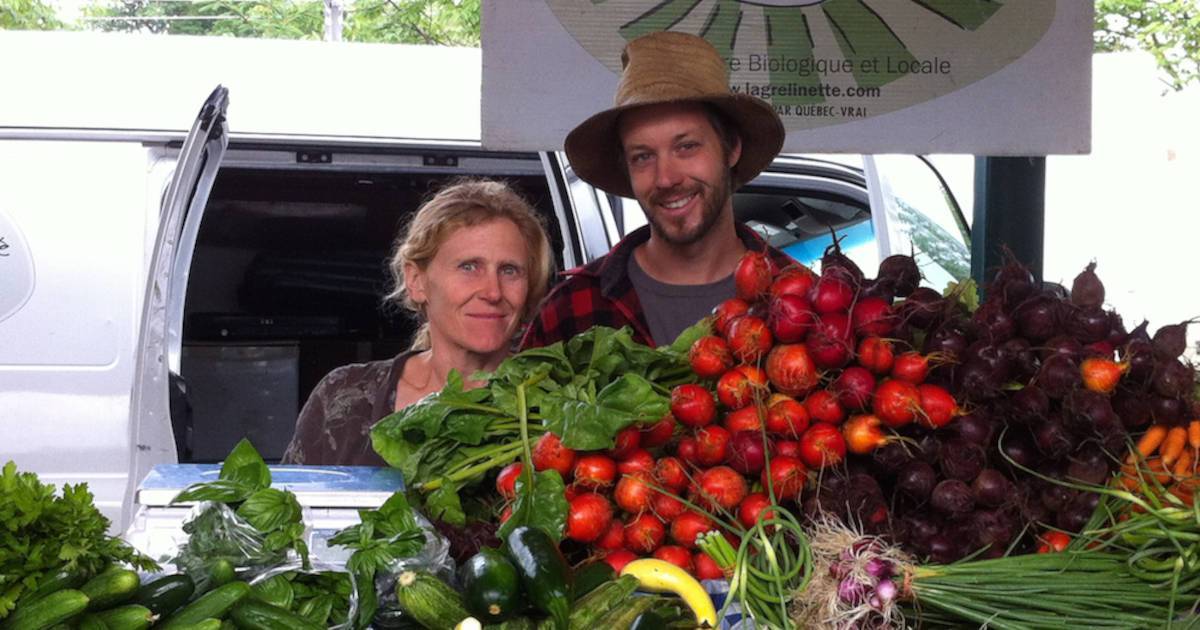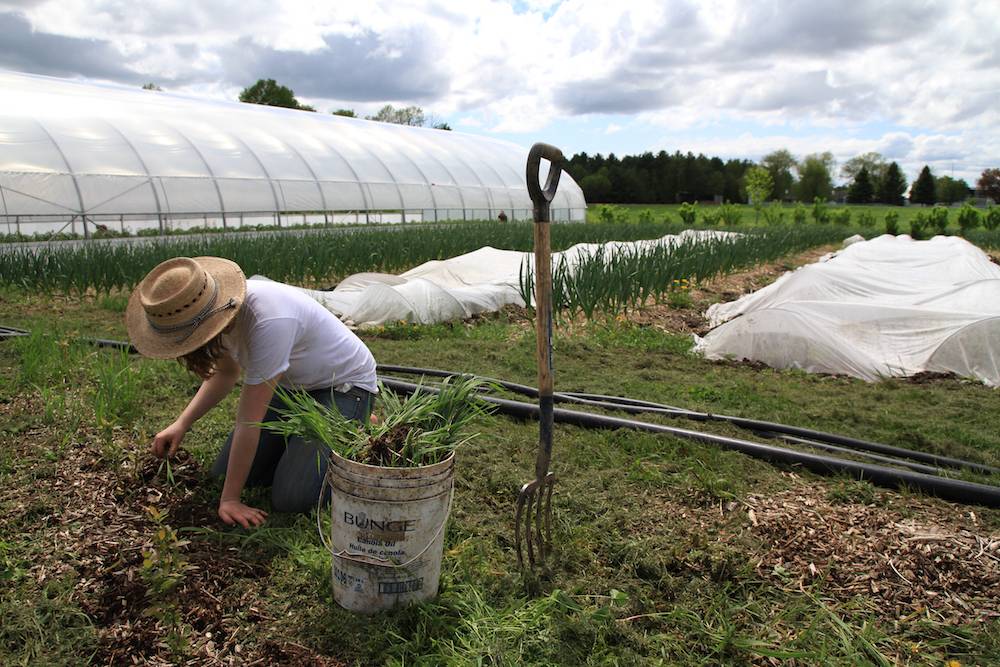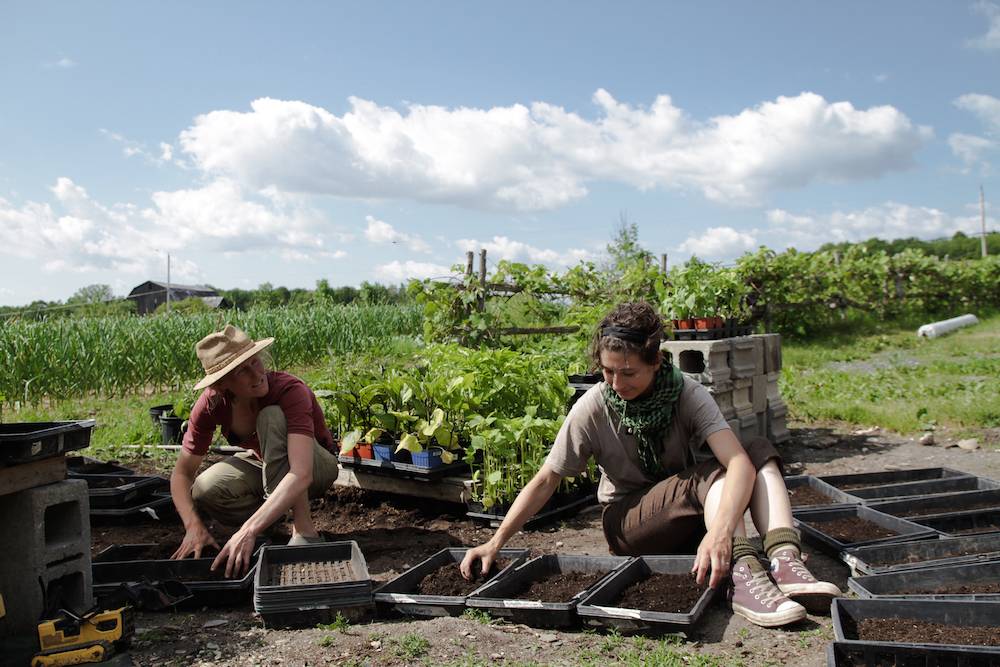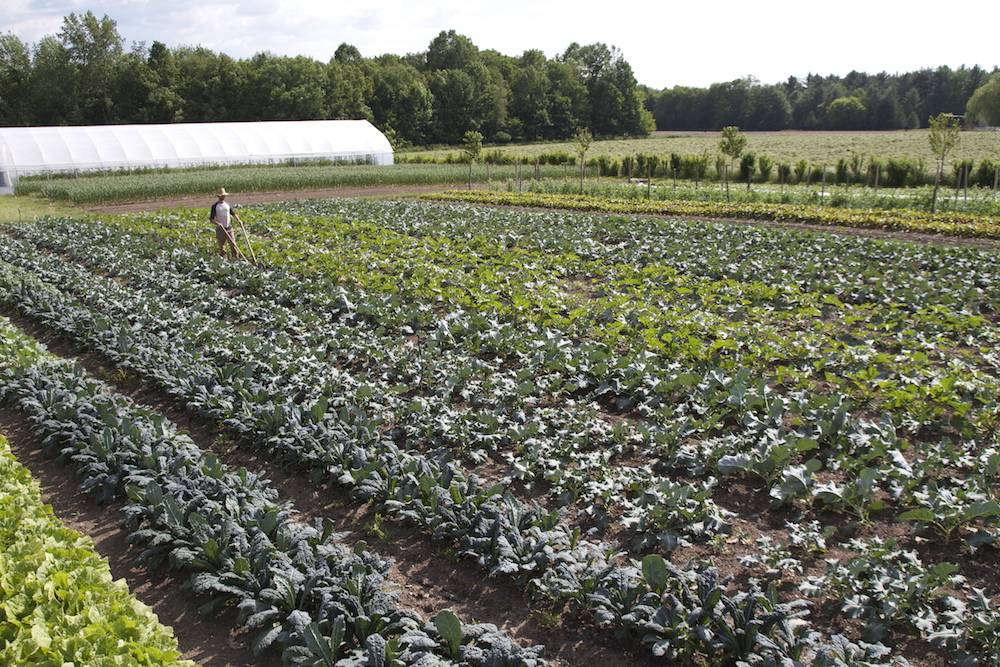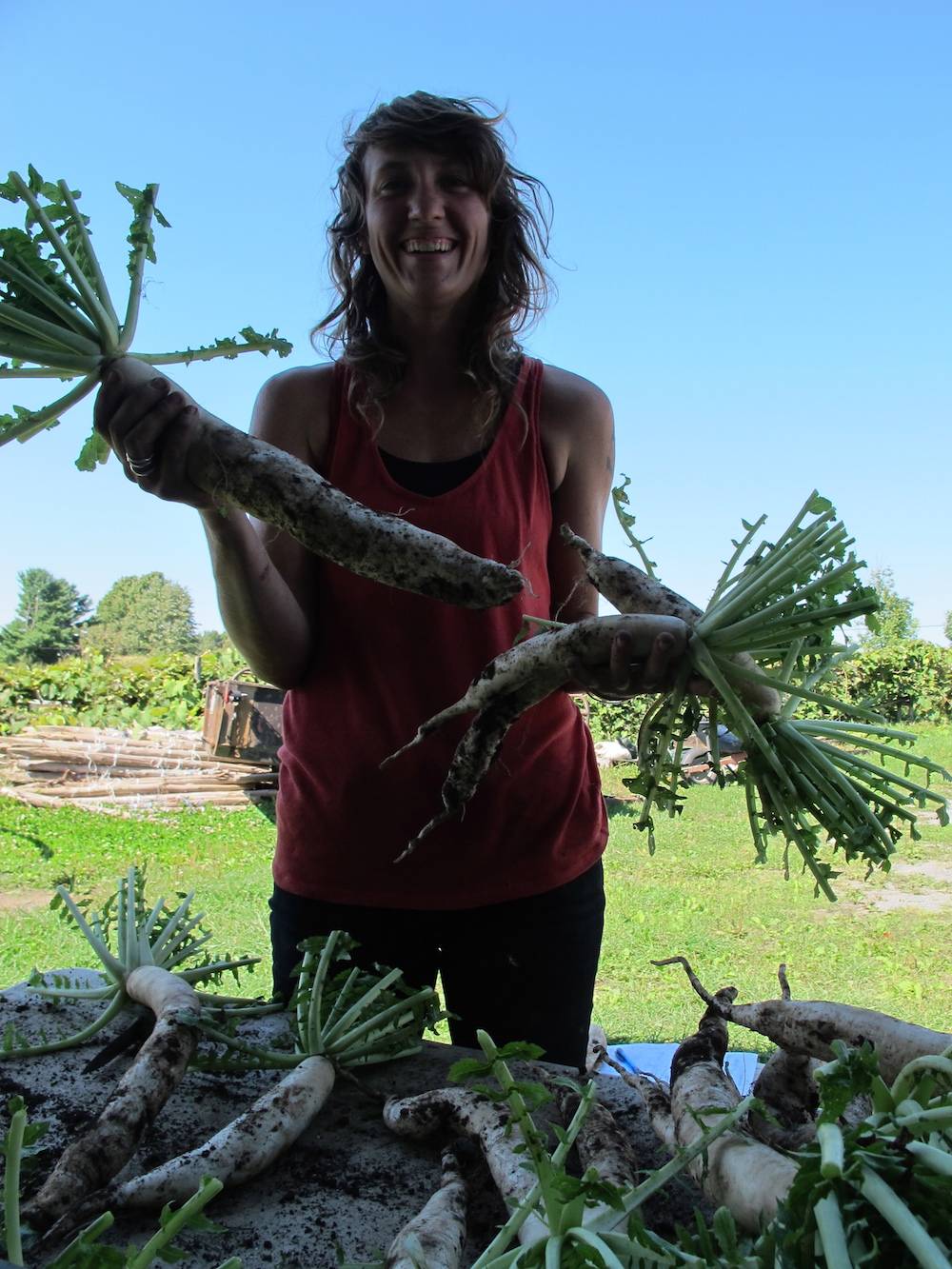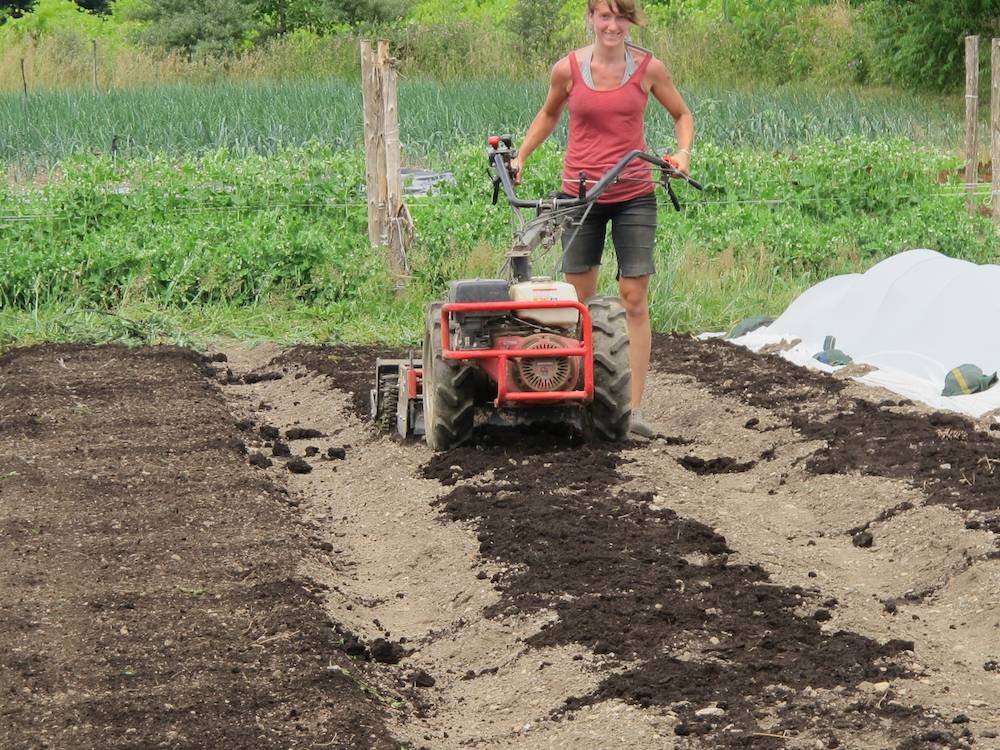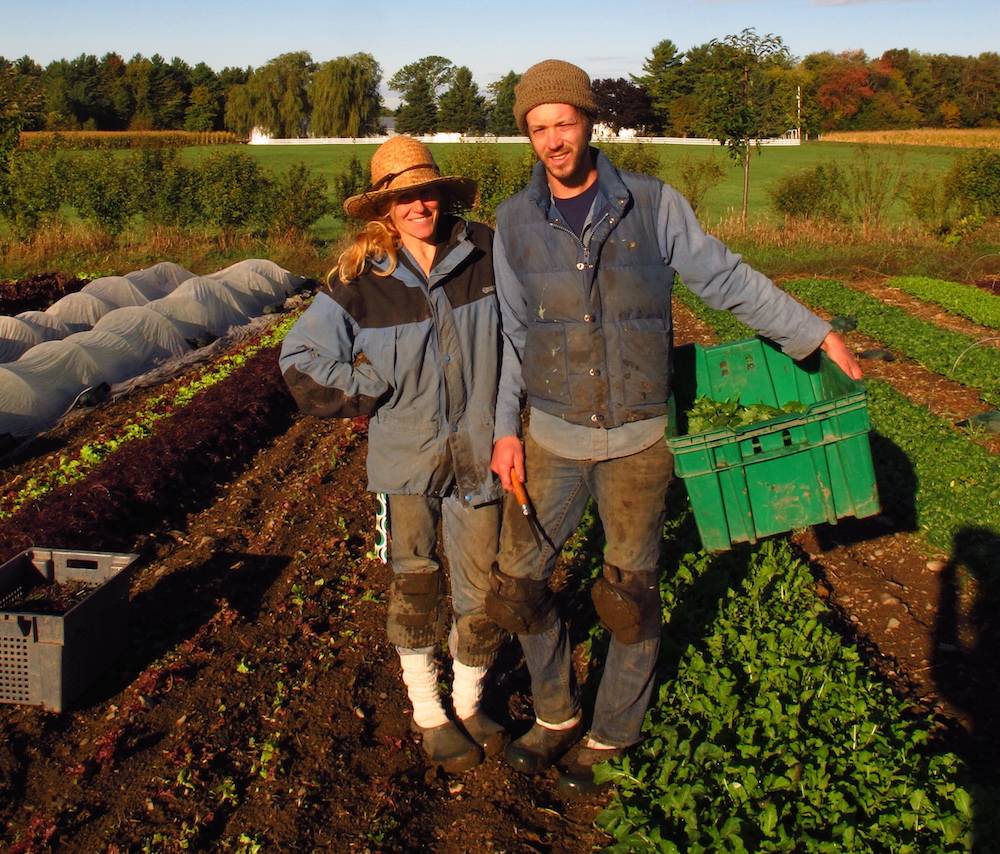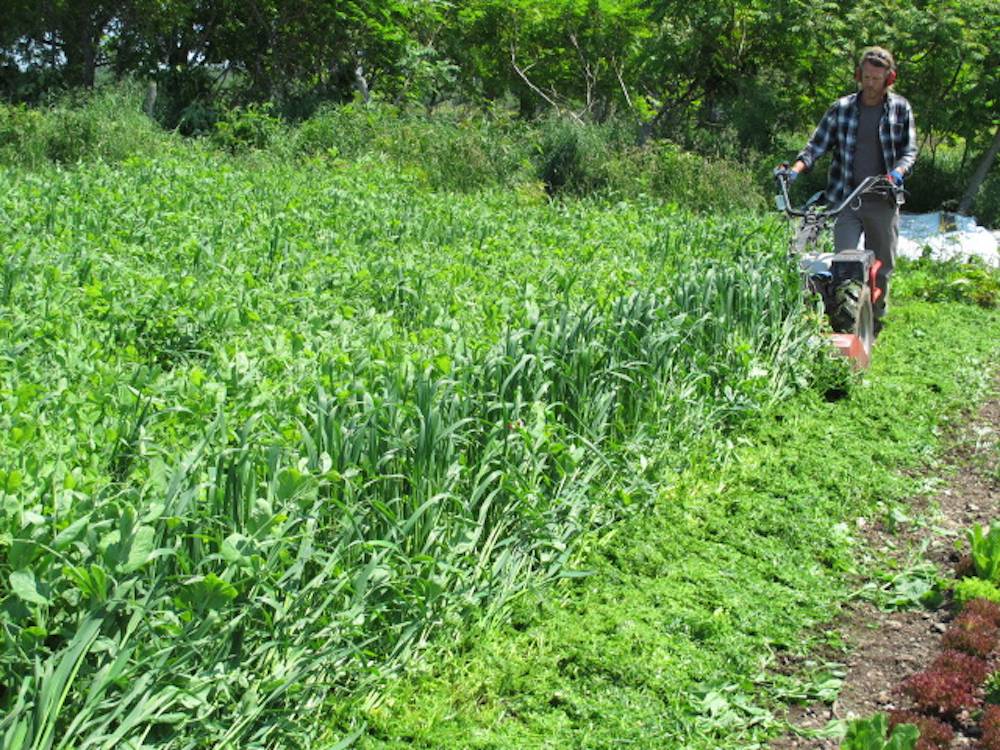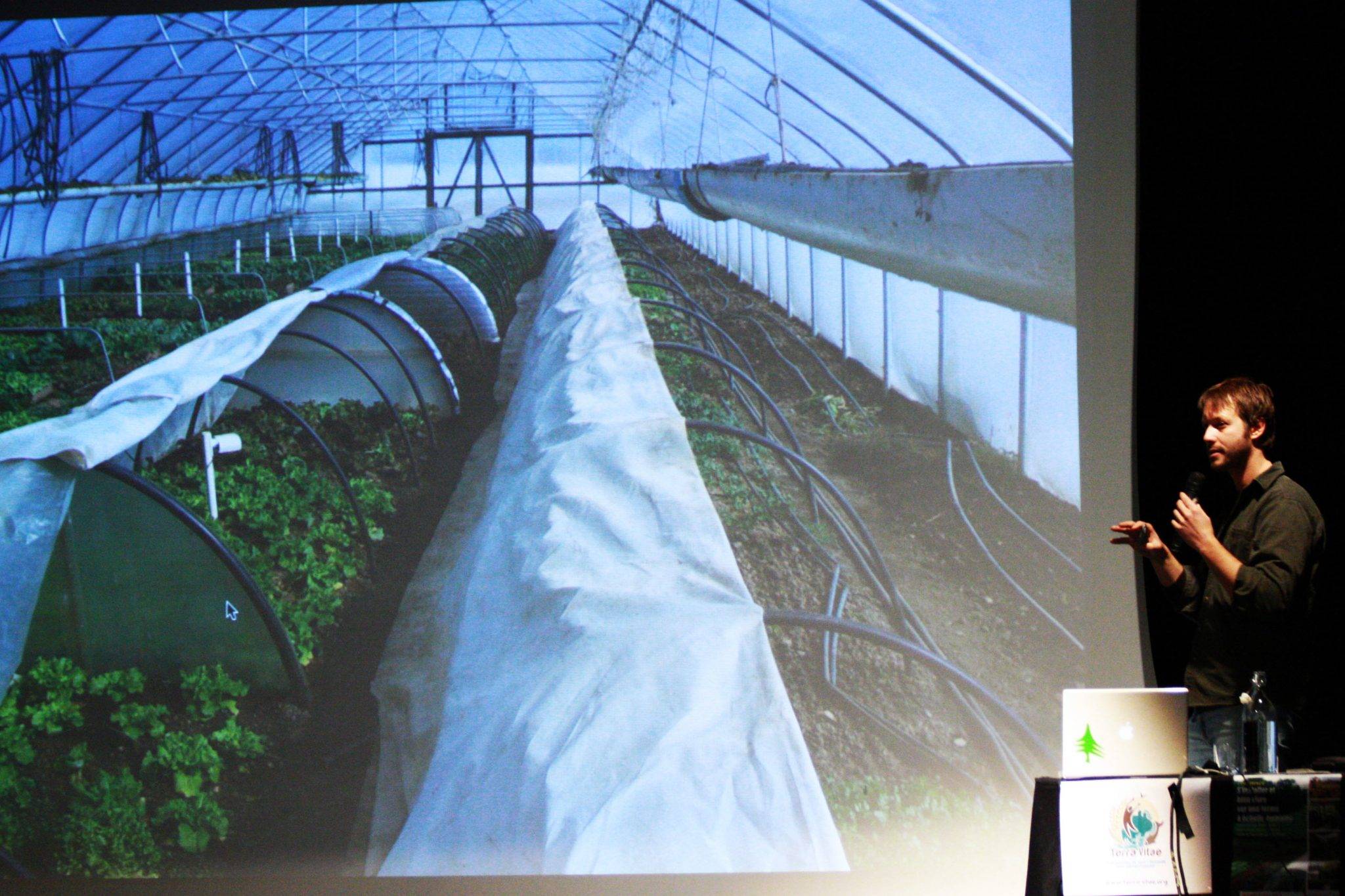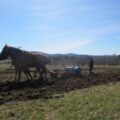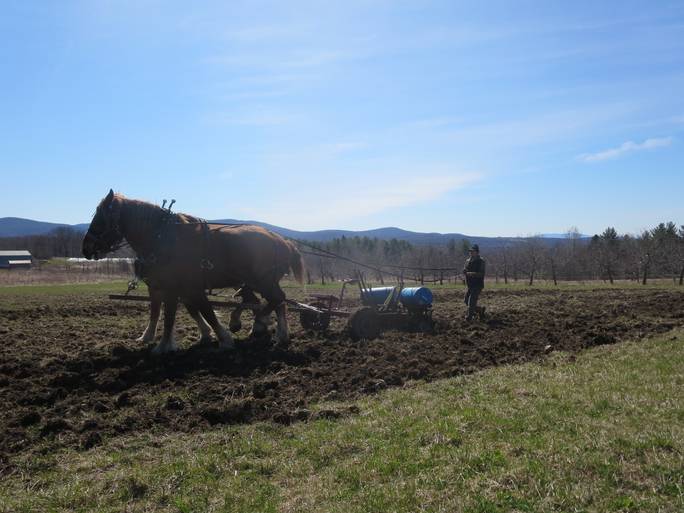The old saying goes that small is beautiful. But for Jean-Martin Fortier and Maude-Hélène Desroches, small is also profitable.
“Small-scale farming is making a comeback. Young people want to become farmers, but they don’t want to take on million-dollar debt,” says Fortier. “We’ve done better than our business plan, and our sales margins are exceptional.” When Fortier and his wife, Desroches, graduated together from McGill University in ecology and environmental studies in 2000, they knew they wanted to help build a greener world. With a love of travel, the couple visited the coffee plantations of Mexico, with the idea that they were going to make people’s lives down there better. But as often happens, it was the teacher who got an education. Humbled by their experience there, the two city kids headed slightly north, to Santa Fe, New Mexico. There they met a man who was not only a leader in the world of small-scale farming but also a fellow Quebecer. Originally from the Gaspé, Richard Bélanger introduced them to the world of market gardening.
The learning curve was steep, but Fortier and Desroches soaked in the education, becoming crop managers and exchanging ideas with fellow market gardeners in Santa Fe, a hub of the market-gardening movement in the U.S.
“Small-scale farming is making a comeback. Young people want to become farmers, but they don’t want to take on million-dollar debt,”
And in the U.S., an increasing number of young people—many of whom are college graduates—are turning to farming. According to the 2012 census, the number of farms in that country rose by four percent. That might not seem like much, but it’s the first increase since the Great Depression. U.S. census data suggests that smaller farms are slowly making a comeback, perhaps driven by the $1 billion boom in local farmers’ markets, while medium and large farms are dwindling.
Upon their return to Canada, Fortier and Desroches settled in picturesque Frelighsburg, in Quebec’s Eastern Townships, pitching a tent on rented land, planting a garden and building a small greenhouse. With a mere one-fifth of an acre, the couple had to make the most of every square inch.
“When we started, it was really a garden,” Fortier says. “We started a CSA [community-supported agriculture] market garden and had about 30 members and lived in a teepee. The income was small, but our lifestyle was simple and frugal.”
In the colder months, the couple travelled, learning more about various aspects of market gardening. But after a couple years, they wanted a more permanent site for their chosen profession. They found a 10-acre property in the neighbouring municipality of St-Armand, and set about the twin tasks of converting an old rabbit barn into a home—and convincing the authorities that they could indeed make a living from the place.
“The CPTAQ [Quebec’s farmland protection board] didn’t get the idea that you could make a living off a 1.5-acre market garden,” Fortier says. “Government regulations are really geared toward medium- and large-scale farms. The rules are really archaic and don’t take the new realities into account. Laws will need to change, but we’re not there yet with this discourse.”
But small farmers—not just market gardeners—may well end up forcing governments to listen, as more and more people adopt small-scale farming practices into their lives, either as a job or as a supplemental income. CSA operations providing everything from vegetables to beef are on the rise, while the number of traditional farms continues to decline, and the average age of those owner-operators continues to climb. On most medium-size traditional farms, at least one family member has a job off the farm to contribute to the bottom line.
“I really believe we are at the beginning of a revolution in farming,” Fortier says. “We need to move away from mass production, and there’s zero doubt in my mind we are heading that way.”
On the bright side, satisfying government demands to be able to build a home on farmland and get financing forced the couple to be really clear about what they wanted to accomplish. Fortunately, Fortier and Desroches are extremely careful planners.
“We plan everything really tightly,” Fortier explains. “We have kept outside labour to a minimum, with low overhead, and use inexpensive hand tools. We sell through our CSA and at farmers’ markets, so there’s no middleman. And it’s all geared to the demand—it’s all geared to be efficient. If you just want to be some hippie that grows vegetables and you don’t take it seriously, it’s not going to work.”
Yup, he said hand tools. Other than a walk-behind two-wheel tractor to power a tiller or seeder, most of the equipment at Les Jardins de la Grelinette is fuelled by human muscle. A number of the tools Fortier uses, including the broadfork (grelinette in French), aren’t typically seen at your local garden centre. He even found a Greens Harvester that runs off of a cordless drill, and a selection of hoes that make weeding fast and easy on the back. Once again, research is key.
“A lot of what we are doing are things that were done up into the 1930s, but with the arrival of the tractor, crops had to be spaced out, and then things just got bigger and bigger. But we’re realizing that’s not always necessary to grow good-quality food.”
There’s another benefit of avoiding the tractor that works right into Fortier’s philosophy: Every inch of his 1.5-acre plot is planned for efficiency, with spaces between rows kept to a minimum to increase the yield per square foot, and leave as little room as possible for weeds. Even the distances between the various crops and the rabbit barn/house has been taken into account to minimize time-wasting foot traffic.
And without depleting the soil. The aim every year is to leave the soil a little healthier than it was, with the proper structure for growing. The main weapon in their arsenal there is compost: lots and lots of certified, weed-seed-free compost. While regular soil has about three percent organic matter, the plots at La Grelinette are in the 10 to 15 percent range.
While the couple seek to limit the hiring of outside help as much as possible, they do bring in extra hands during the busy periods. Typically these are young people who come for the summer to live in tents in the woods, where a communal kitchen has also been built for them.
The result would make the most jaded agronomist take notice: with the couple rarely working in excess of 50 hours a week, their market garden brought in over $140,000 in sales last year, with a profit margin of about 40 percent. The couple feeds 140 families in their CSA and attends two farmers’ markets a week. And unlike most farmers, they get winters off to travel, attend conferences on small-scale farming and take some time to relax with their children.
The success of La Grelinette has made Fortier a popular lecturer on the subject. He has also put a lot of his non-farming time into writing The Market Gardener: A Successful Grower’s Handbook for Small-Scale Organic Farming. Spanning everything from site preparation to which veggies are profitable and when, his book provides solid information for aspiring farmer and seasoned backyard gardener alike. By the time the English version came out in March 2014, the original French version had sold over 17,000 copies, and by the time this Almanac went to press a few short months later, the English volume had already sold 10,000 copies.
“I’ve given a lot of workshops over the last couple of years,” Fortier says. “Everywhere I go, I am seeing people who are super-enthusiastic.”
In the process of creating their lives, Fortier and Desroches have also created something else that’s increasingly rare in this age: job stability. Due to the variety of produce and the close attention paid to their crops and low overhead, the couple are able to react quickly if something goes wrong. And if one crop doesn’t work out in a given season, chances are another will offset the loss.
“This is a problem with big farms, because they can’t adapt. If the climate keeps changing as it has, monoculture farms with long production chains won’t be able to deal with it,” he says. A change in the weather or the arrival of disease can decimate a crop, and the large-scale farmer’s bottom line.
Meanwhile, the CSA model, in which customers pay a set fee at the beginning of the season in exchange for baskets of fresh produce every week once harvesting begins, helps stabilize things financially. It also means that the successes—and failures—are shared.
“It’s about synergies—integrating all of the aspects of the operation,” Fortier says. “You’re building an ecosystem.”
It means farming doesn’t have to be an all-or-nothing proposition. Even urban dwellers are pressing rooftops and other open spaces into service as gardens, while folks with smaller properties can develop small market gardens as a sideline income, or raise a few chickens (check out our feature on chickens for more on that).
And it means you don’t have to turn yourself into an enviro-monk to do it. While Fortier’s produce is organic, he says he’s not about to forgo the convenience of sheet plastic or his much-loved two-wheel tractor. “Though you can run into a lot of dogma in organic farming circles, I just like to use what works,” he says.
Fortier and Desroches, who both grew up in the suburbs outside Montreal, are all about what works for them. They love what they do, and are happiest when they are out in the fields. And they are confident an increasing number of people will see the appeal.
“As a society, we have to move away from mass production,” Fortier says. “For me, this makes sense.”

